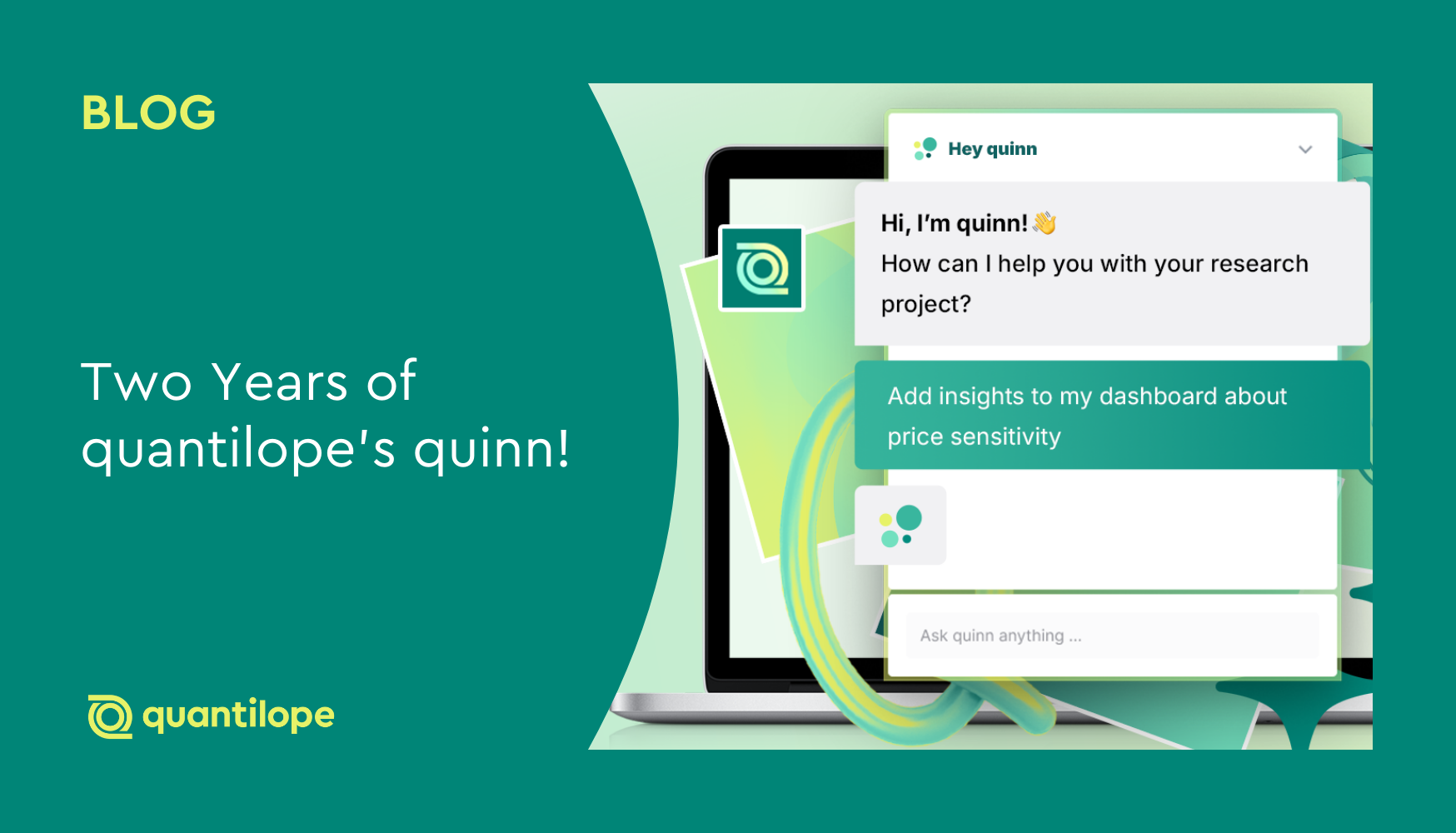A note from quantilope CEO, Dr. Peter Aschmoneit
For a little more than two weeks now, quantilope, along with most of our market research client teams have been in WFH (Work from home) mode.
I’ve spoken to many market research managers, sharing our experiences of what it’s like to suddenly have to manage your teams remotely - especially at a time when consumer behavior is drastically changing and many budgets are being radically cut.
In this post, I'm sharing my most important lessons for remote management that I've learned throughout my career and in particular, over the last few weeks.
In order to put the lessons into context, I would like to briefly share three of my leadership principles:
- I consider strong professional relationships with employees and colleagues to be of fundamental importance when leading teams.
- I maintain that teams develop the greatest strength when they internalize the vision and mission of the company or team and that they enjoy pursuing it.
- My operational management style is strongly based on the joint commitment of quarterly targets, measurable outcomes, and activities to achieve the targets. We use OKRs (objectives and key results) for this.
Strengthen the mission, now
quantilope’s mission is to "free all business decisions from gut feel" with our Agile Insights technology and agile ways of working. This is what we stand behind and what we work on every day. Of course, you can feel a dedication to our mission when you personally experience the teams in one of our offices - how they dynamically transform ideas into software code, passionately on-board great brands, and advise our clients on insights over the phone.
In the remote situation, the insights teams' mission must be strengthened now. Within both the team and throughout the entire organization. I do this by repeatedly emphasizing the great opportunities of the current situation (to empower brands with efficient ways to capture quality insights for informed decision making, etc. ) and by giving the mission a slight twist:
We will transform the insights industry even faster, if we adapt to the new needs now.
The mission acts as a clear North Star if it is relevant to the team in the respective context and is communicated again and again. It can never be communicated enough.
Align around concrete goals for the next 90 days
Have you ever wondered what your home office employees actually do all day long? Whether everyone is working full hours? Rather, you should align your team around measurable goals in the remote situation and then ask how you can be supportive in achieving these goals. This releases a lot of positive energy and is the opposite of micromanagement.
I find it very helpful to think this through in terms of measurable goals (key results) vs. activities, taken from the OKR approach. The measurable goals should not change too often (quantilope uses 90 day goals) and can be inspired and set by the team leader. The concrete ideas and actions for how the team achieves the goals are called activities. Activities are best defined by the team and each team member themselves. Activities can be adjusted if the team members notice that the activity does not lead to the desired result.
Double your frequency of personal 1:1's and team meetings
As mentioned above, I believe that strong professional relationships are extremely important when leading teams. At a personal management level, I believe that a weekly or bi-weekly 1:1 with direct reports is sufficient, depending on the management situation.
In the remote situation, I simply double the frequency of the 1:1’s, the all-hands team meetings, and in some cases, tightened the time frame. I’ve noticed how important these exchanges are and how the relationship can are easily strengthened in this way.
You should also double your activity in the team's communication channels. We use Slack as a messenger for internal communication and it really doesn't take much time to take part in the discussions and say thank you here and there!

Distance does not mean giving less feedback
How do I deal with feedback in the WFH work situation? Can feedback wait until everyone finally meets again? Absolutely not. While it takes some time getting used to giving feedback remotely, you really need to keep an eye and listen carefully- Feedback is essential to continue to develop your employees. It can't just stand still.
The rule of giving timely feedback is more important in the remote situation. Take the last 5 minutes of your video meeting or a 15-minute appointment towards the end of the day for both well-considered improvement and positive feedback.
Pay even more attention to communication cues
In personal communication, we automatically "read" the emotional reaction of our conversation partners. This is of course much more difficult remotely. Especially when there are cultural differences between the participants, remote communication is often characterized by misunderstandings. In e-mails things are interpreted differently, you can't see facial expressions on the phone, and emojis in messengers are misunderstood.
Two short tips. First, switch on the camera whenever you can! So you can get at least 70% of the perception. And second, use “receipts of understanding” as often as possible. Best done as an open question: "Please tell me once from your point of view what we have agreed?"

In summary, your team needs your full leadership skills now more than ever. Dedicating extra time to providing the support they need will ensure an even stronger team and stronger company comes out on the other side.




.png)